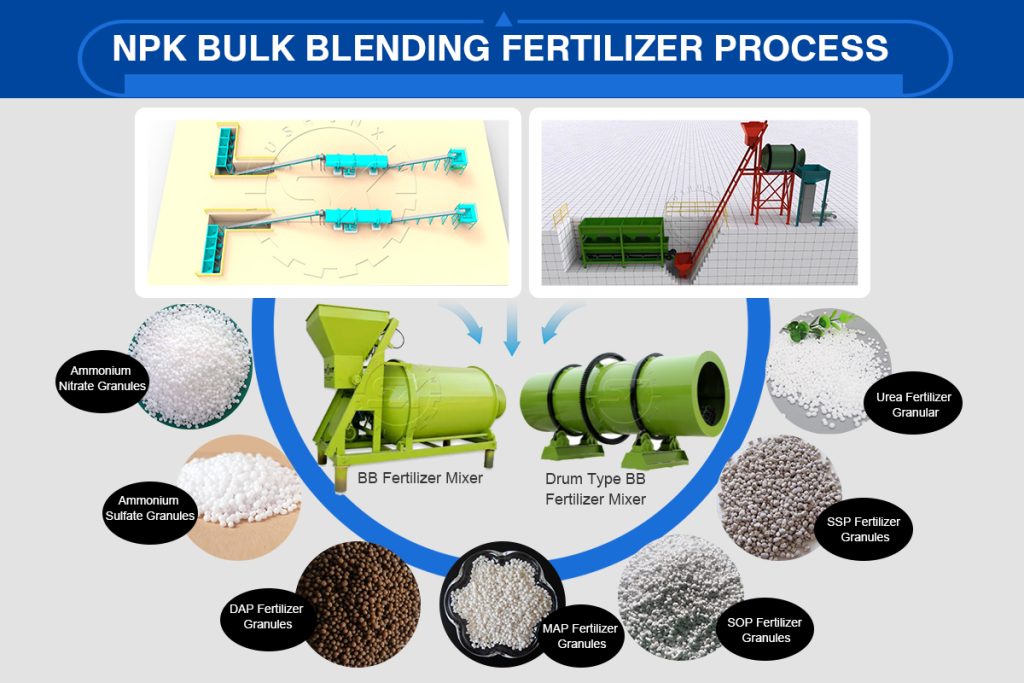The total investment for establishing a BB fertilizer factory involves a comprehensive understanding of the raw materials, machinery selection, production procedures, and plant setup costs. Many investors and entrepreneurs seeking to build a fertilizer manufacturing plant often focus on the budget required for the overall fertilizer plant setup. However, a deeper insight into the blending process and related equipment choices is essential for accurately estimating the fertilizer production plant cost.
Which Raw Materials Are Suitable for BB Fertilizer Production?
Careful selection of raw materials significantly impacts the efficiency and quality of the bulk blend fertilizer production process. Suitable ingredients often include nitrogen-based fertilizers such as urea, phosphorus sources like monoammonium phosphate (MAP) or diammonium phosphate (DAP), and potassium fertilizers such as potassium chloride (KCl) or potassium sulfate (K2SO4). These raw materials are commonly used in bulk blending production lines because they allow for precise nutrient customization according to local agricultural requirements. Various trace elements, including zinc sulfate or borax, sometimes become part of the raw material mix, depending on market demand. Proper storage and handling of these components influence not only the bulk blended fertilizer factory cost but also the overall efficiency of the plant’s operation.

What Machinery Features Affect the BB Fertilizer Plant Investment?
Several core machines form the backbone of the BB fertilizer production line, and their features have a direct impact on the total fertilizer plant cost. The automatic or static batching machine enables precise proportioning of different raw materials, which is crucial for creating consistent bulk blend fertilizers. Following the batching process, a bucket elevator efficiently transfers materials to the BB fertilizer blender or mixer, which is the central machine in the mixing procedure. For factories with small capacity, a horizontal BB fertilizer blender is typically the preferred choice due to its compact design and cost-effectiveness. In contrast, large-scale BB fertilizer manufacturing plants benefit from a drum-type BB fertilizer mixer, which offers high mixing efficiency and uniformity at a larger scale. The inclusion of a packing machine automates the final step, ensuring accurate and efficient bagging of the finished product. Besides these, when the aim is to convert powder materials into BB fertilizer granules, a double roller granulator stands out as a recommended machine because of its ability to produce uniform granules with low energy consumption. Each equipment choice, from basic mixing machinery to advanced granulators or packing machines, directly influences the price quotation and the overall BB fertilizer plant investment.
How Do Blending Processes and Equipment Choices Influence BB Fertilizer Factory Cost?
The blending process forms the core of any bulk blending fertilizer production line, and the choice of technology determines the efficiency, labor requirements, and operational costs. Establishing a BB fertilizer factory requires attention to not only the mixer’s blending speed and capacity but also to its ease of cleaning, material compatibility, and automation level. For example, a fully automated BB fertilizer mixing system reduces labor costs and enhances production accuracy, which can justify a higher initial machinery price. On the other hand, manual or semi-automatic procedures may fit the budget constraints of smaller fertilizer production plants but often lead to increased operational costs over time. Investors must also consider the cost of auxiliary equipment, such as the crushing machine (vertical crusher or chain crusher), which prepares raw materials to the appropriate particle size before blending. The balance between equipment automation and manual operation becomes a key consideration when building or upgrading a bulk blend fertilizer plant. A thorough evaluation of the process requirements and equipment specifications leads to an accurate understanding of the bb fertilizer manufacturing plant cost.
Conclusion
Determining the total investment for setting up a BB fertilizer factory requires a systematic review of raw material selection, machinery configuration, and the blending process itself. Each factor—from the type of bulk blend fertilizer production equipment to the level of automation and the choice between powder and granule output—contributes to the overall cost and long-term profitability of the fertilizer plant. By carefully analyzing the process and consulting experienced professionals, investors can receive an accurate quotation for building a cost-effective and efficient bulk blending fertilizer manufacturing plant. For those seeking reliable solutions and up-to-date machinery in the BB fertilizer industry, a professional fertilizer equipment manufacturer such as Yushunxin offers comprehensive services and advanced equipment for optimizing both the performance and the cost of your fertilizer plant setup. You can visit: https://www.fertilizerproductequipment.com/bb-fertilizer-plant-cost/